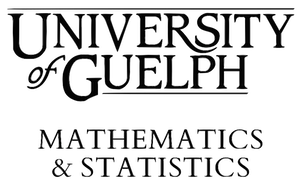Summerlee Science Complex Room 1504
SPEAKER: WILLIAM LANGFORD
ABSTRACT:
Perhaps the outstanding scientific challenge of our age is that of understanding climate change. It is widely accepted that the Earth's climate is warming, and this warming is caused by human activities. Therefore, it is important to know what changes to expect in the future. Yet, the precise trajectory of future climate changes is still a matter of debate. Researchers in the Guelph Climate Dynamics Laboratory (GCDL) are investigating the interactions among the fundamental nonlinear processes of atmospheric physics, using mathematical models, in order to predict how the climate of the Earth will evolve in coming decades and centuries. These nonlinear processes introduce positive feedback mechanisms, which amplify the effects of human activities. We employ the mathematical idea of Topological Equivalence to distinguish changes which are continuous (in the mathematical sense), from those which are bifurcations, (these can be abrupt, irreversible, and potentially catastrophic). Our work predicts that, if human activity continues on its present path, a catastrophic change (bifurcation) will occur in the next century. However, the model also shows that mitigation strategies can avoid this bifurcation.
